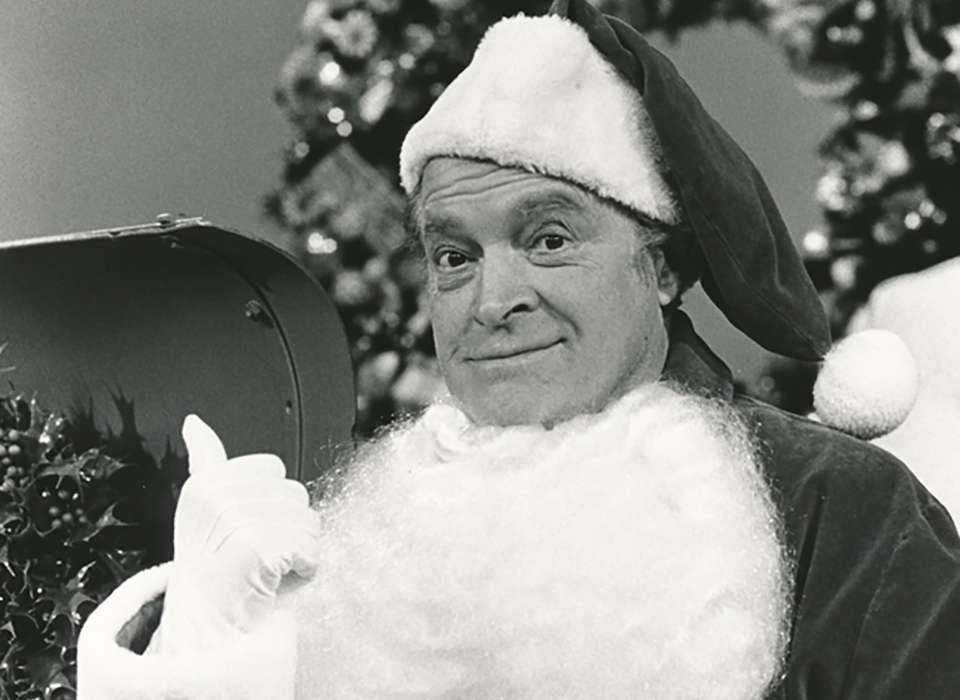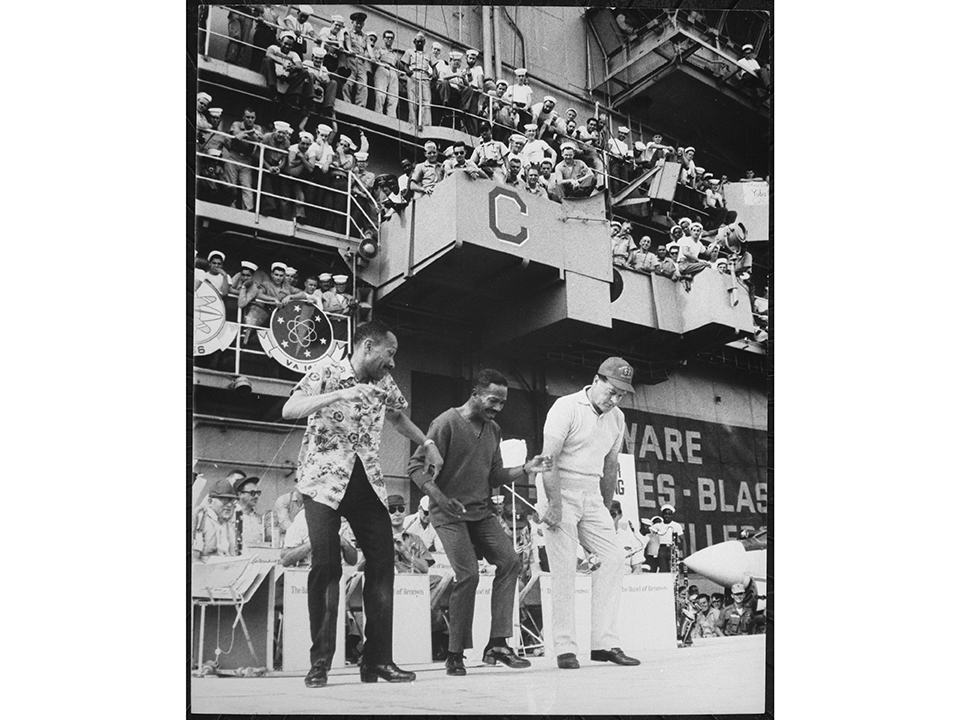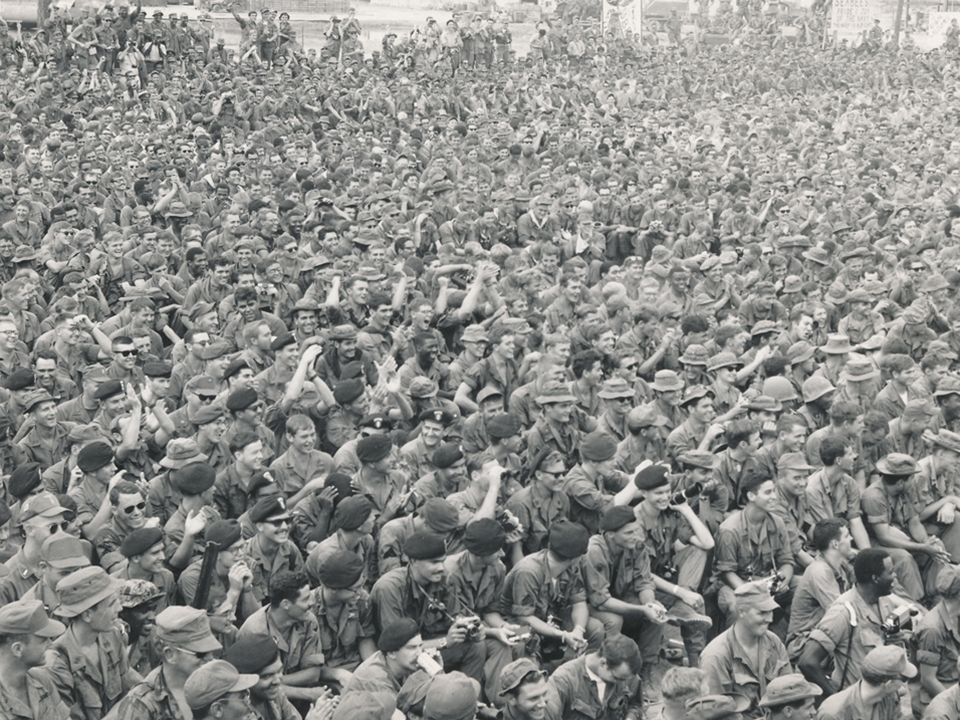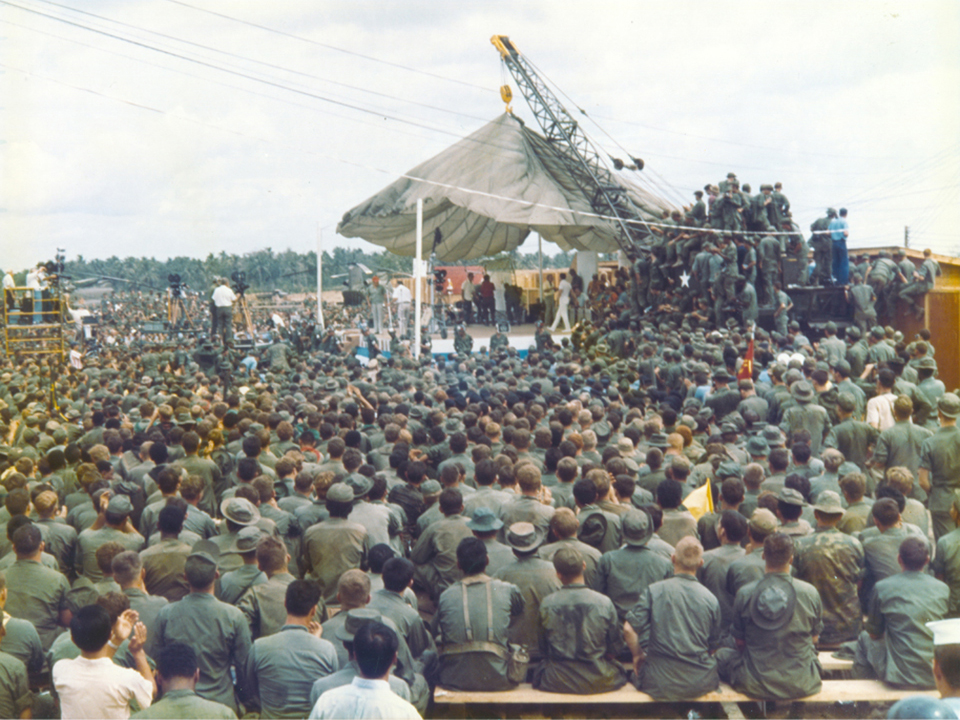Bob Hope’s deep connection with American troops took root in World War II with his nonstop performances at military bases around the United States and the globe from 1941-1945. Hope was particularly dedicated during the holidays, recognizing the importance of being visited and of being recognized during the holiday season. Christmas was a special time for the Hopes and the family sent out an astounding 10,000 Christmas cards each December. Hope’s daughter Linda recalled in her oral history interview with the Museum that her father was away performing during many holidays over the years. This led to a Hope family Christmas tradition of a delayed celebration, opening gifts when her father returned home. The Hope family realized that they didn’t have their dad at Christmastime, but neither did a lot of kids whose loved ones were away fighting. Later, the family would join Hope in visits to troops, including holiday performances overseas.
Wayne Forest, 101st Airborne veteran and volunteer at The National WWII Museum, recalled seeing one of Hope’s holiday shows in Vietnam. Forest saw Hope perform in December 1970 in Hue, Vietnam at Camp Eagle in a stadium that contained more people than he had ever seen gathered together in one place. Near the end of the performance, the troupe began to sing “Silent Night.” Forest remembered, “they asked everybody to join in...well, they really didn’t have to; when they started singing everybody jumped in and you see these hardened combat individuals with tears in their eyes.” The moment was so powerful, full of longing and memories shining light into the darkest circumstances, perhaps making them seem even darker. Moments such as these were occasionally described as making those times of war, times away from home, more difficult by showing the troops glimpses of things beyond their reach in that moment. But more often, they were windows into a future that they wanted and hoped for intensely. Hope’s performance made the troops keenly aware of the holidays and the family they were missing.
"You really weren’t aware of Christmastime until that...and when that happened, you started thinking about...I hadn’t seen my baby; my baby was a year old. It hits you. It hits you pretty hard. It’s just something that’s burned in my memory that I’ll never forget. Bob Hope’s a hero.”
Wayne Forest, 101st Airborne veteran and Museum volunteer
Hope became known for his televised Christmas specials which began in 1957 and documented his mission as ambassador to US forces. Not only did those performances bring a bit of home to those serving around the world, but they brought the faces of those troops into American living rooms. Families scanned the faces of audience members anxiously for a treasured glimpse of a husband or son serving.
Author William Robert Faith wrote in his book Bob Hope: A Life in Comedy that, “Hope the producer had a tough time deciding when to stop showing the different expressions on their faces, those portraits of ecstasy and of wonder and of sadness at being separated from home.” Photos of some of his shows there include shots of elaborate filming set-ups, the booms and cranes used to catch the faces in the crowd.
Hope’s Christmas specials gained in viewer popularity over the years and became some of the period’s most-watched television events. His telecast of his Christmas 1964 Vietnam performances was viewed in 24.5 million homes, half of all Americans watching television that night per the Nielsen ratings. The viewers increased year over year until “The Bob Hope Vietnam Christmas Show” broadcast by NBC on January 15, 1970 broke records with 64 percent of the viewing public, the largest audience for an entertainment program in television history.
As American forces remained in Vietnam, Hope performed for them for nine years running. Hope’s December 1972 performances in Vietnam was referred to as “the last Christmas show,” but Hope continued to tour during the holidays and visit troops mainly in hospitals stateside. Many of those he visited in those years had seen earlier Hope performances in Vietnam. Many years later in 1990, during Operation Desert Shield, an 87-year-old Hope visited American troops in Saudi Arabia. His jokes demonstrated the self-deprecating humor that endeared him to so many audiences throughout his long life. He joked, “I’m glad to be here with you. I wasn’t crazy about the invitation, though. Your C.O. said, ‘Bob, the guys want to have their turkey on Christmas, so don’t be late.’” For more than half a century, Hope remained the most beloved entertainer of American military audiences. For many who saw him, especially at Christmas time, he was a hero.
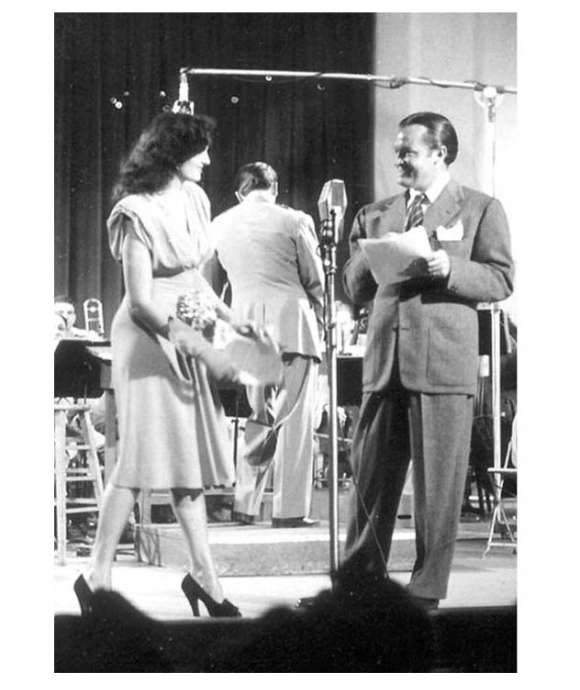
Christmas on the Air—Wartime Radio Programs Revisited
Radio as sonic morale booster was particularly important during the holidays. In this article we revisit Christmas recordings of Command Performance, The Jack Benny Show, and other radio programs.
Kim Guise
Kimberly Guise holds a BA in German and Judaic Studies from the University of Massachusetts Amherst. She also studied at the Universität Freiburg in Germany and holds a masters in Library and Information Science (MLIS) from Louisiana State University. Kim is fluent in German, reads Yiddish, and specializes in the American prisoner-of-war experience in World War II.
Cite this article:
MLA Citation:
APA Citation:
Chicago Style Citation:
